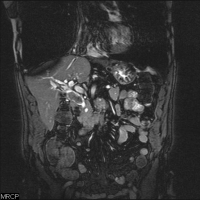Search for urolithiasis, by CT-Scan with a dedicated protocol, without contrast and with a weakly radiating technique (Uroscan), has a rate of sensitivity and specificity of 96%. This high detection rate is explained by the possibility of following the ureter throughout its course and by the fact that 90% of urolithiasis are radiopaque on CT-Scan. In the decision algorithm, we should however consider irradiation. A patient known for recurrent renal colic could first be investigated by ultrasound. Unless renal insufficient or carrying a single kidney, a patient with a negative ultrasound result having persistent symptoms despite conservative treatment could then be re-evaluated clinically with uroscan if necessary. For the purpose of limiting irradiation, the investigation of a first episode of renal colic can be started with ultrasound and if necessary complemented by uroscan, or can be initially performed by uroscan especially if the patient is older than 30 years old or if there is clinical possibility of another cause such as diverticulitis, or other.

Figure 4 : IRM, coupe coronale: cholédocholithiases
